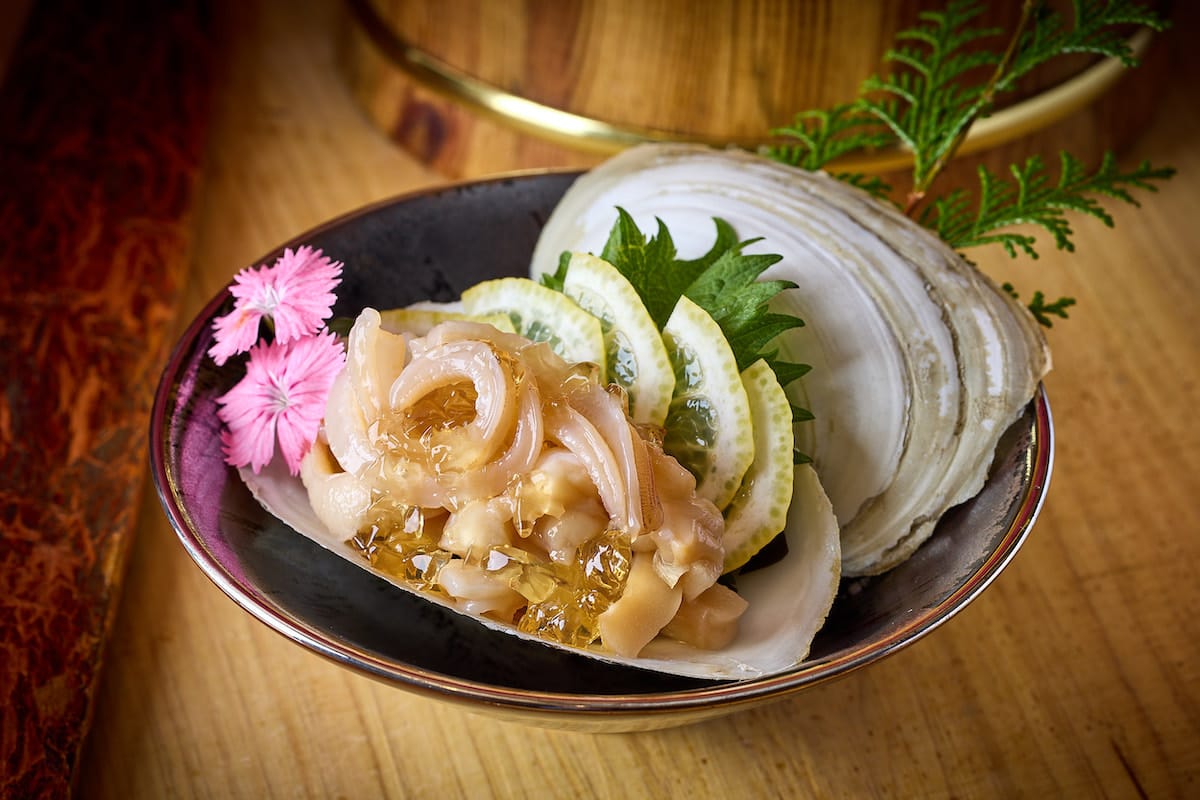This comprehensive guide explores the fascinating world of mirugai, also known as geoduck, a giant clam prized for its unique culinary attributes. From its surprising flavor profile to its cultural significance and sustainable harvesting practices, we’ll delve into everything you need to know about this remarkable delicacy.
Decoding the Geoduck: Flavor, Texture, and Culinary Adventures
The geoduck, often dubbed the “elephant trunk clam” due to its long siphon, may appear intimidating, but its flavor profile is surprisingly delicate. Imagine the fresh, briny essence of the ocean, but with a subtle sweetness and a hint of butter. That’s the unique taste of geoduck. Some compare it to other shellfish like clams or scallops, but with a distinct “ocean-fresh” quality that sets it apart.
The texture is equally captivating. While the siphon offers a pleasant crispness, almost a crunch, the mantle and muscle provide a more chewy, yet tender, experience. This textural contrast adds another layer of enjoyment to this culinary gem.
Mirugai Around the Globe: A Cultural Icon
Mirugai’s unusual appearance has led to intriguing cultural interpretations, particularly in East Asia. In some cultures, it’s considered an aphrodisiac, further enhancing its appeal and contributing to its premium price tag in upscale restaurants.
- Japan: Mirugai often graces the menus of sushi restaurants as sashimi, thinly sliced and served with soy sauce and wasabi, allowing its natural sweetness to shine.
- Korea: Here, you might encounter it raw with a fiery chili sauce, a bold contrast to the clam’s inherent sweetness. It also finds its way into hearty soups and stir-fries.
- China: Hot pots often feature mirugai, where it absorbs the flavorful broth while adding a delightful chewiness.
Beyond these traditional preparations, geoduck’s versatility extends to innovative dishes like ceviche, chowder, and even pie. Chefs and adventurous home cooks continually explore its culinary potential, creating exciting new ways to savor this unique ingredient.
What is Geoduck Fresh Mirugai?
Mirugai, the Japanese name for geoduck, signifies a giant clam native to the Pacific Northwest. Its scientific name, Panopea generosa, hints at its impressive size. This remarkable creature boasts a long, fleshy siphon, resembling an elephant’s trunk, which can extend over three feet.
Fresh mirugai preparation requires a bit of skill. Cleaning the geoduck involves carefully removing the tough outer skin and separating the siphon from the body. The siphon is often enjoyed raw, while the body can be cooked in various ways. For detailed cleaning instructions, resources like the Marx Foods Blog provide step-by-step guidance.
The Geoduck Siphon: Explained
The geoduck’s siphon isn’t just a peculiar feature; it’s essential for its survival. This multi-purpose organ serves as the clam’s respiratory and digestive system. It draws in seawater, filtering out tiny plants and animals for nourishment, while also extracting oxygen. The filtered water, along with waste products, is then expelled back into the ocean.
This squirting action also acts as a defense mechanism. When threatened, the geoduck forcefully contracts its siphon, creating a jet of water that can startle predators, giving the clam precious time to burrow deeper into the sand. While primarily seawater, this expelled liquid also contains waste products, making it an effective deterrent.
Ensuring a Sustainable Future for Geoduck
Like many prized seafood delicacies, geoduck faces sustainability challenges. Overharvesting and habitat destruction pose threats to its populations. Therefore, responsible harvesting practices are crucial for preserving this unique clam for future generations. Ongoing research explores sustainable aquaculture methods, offering hope for the future of geoduck farming.
Nutritional Benefits of Geoduck
Beyond its culinary appeal, geoduck provides several nutritional benefits. It’s a good source of protein, essential for building and repairing tissues. It also offers various vitamins and minerals, contributing to a balanced diet. Ongoing research suggests it may also contain beneficial antioxidants, but further studies are needed to confirm these findings.
Finding and Selecting Geoduck
If you’re eager to experience geoduck, you can likely find it at Asian grocery stores, well-stocked seafood markets, and some higher-end restaurants. Online ordering is also an option. When purchasing, look for firm specimens with a fresh, seawater scent. Avoid those with a strong fishy odor, as this suggests they aren’t fresh.
The Price of Luxury: Geoduck Market Value
Geoduck often commands premium prices, reflecting its status as a delicacy. The market value can vary based on factors like size, availability, and demand. This contributes to its perception as a luxurious food item, often featured in upscale dining experiences.
Mirugai vs. Other Clams: A Comparison
While geoduck shares some similarities with other clams, its unique flavor and texture set it apart. Compared to littleneck clams or razor clams, geoduck offers a more pronounced sweetness and a firmer, chewier texture. Its large size also distinguishes it, earning it the moniker “king of clams.”
A Culinary Adventure Awaits
Mirugai (geoduck), with its peculiar appearance and captivating flavor, offers a genuine culinary adventure. Whether you’re a seasoned foodie or simply curious to explore new tastes, this giant clam invites you to discover the wonders of the ocean’s bounty. While research continues to uncover more about its biology and the long-term effects of harvesting, one thing remains certain: the geoduck’s journey from ocean to plate is a fascinating tale that’s likely to continue evolving.
If you’re a fan of extreme heat, you won’t want to miss the naga jolokia pepper, one of the hottest peppers on the planet.
- Discover Long Black Pepper: Flavor & Health Benefits - April 25, 2025
- Shocking Twists: The Grownup Review: Unreliable Narration - April 25, 2025
- A Quiet Place Book vs Movie: A Deep Dive - April 25, 2025
















